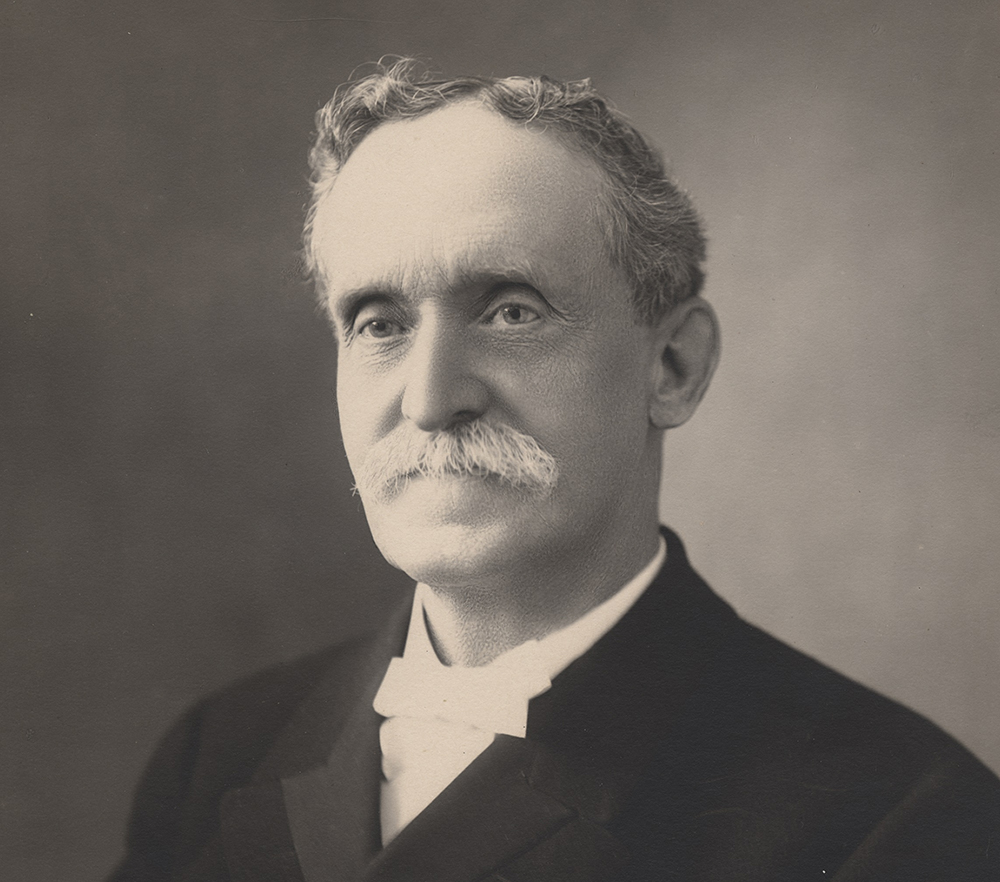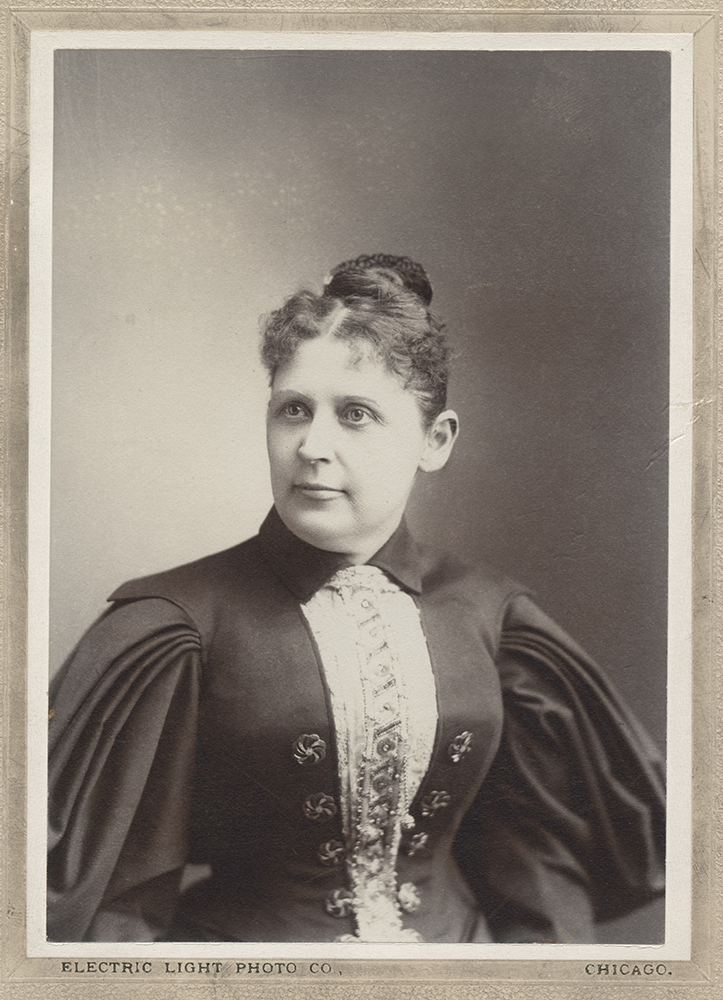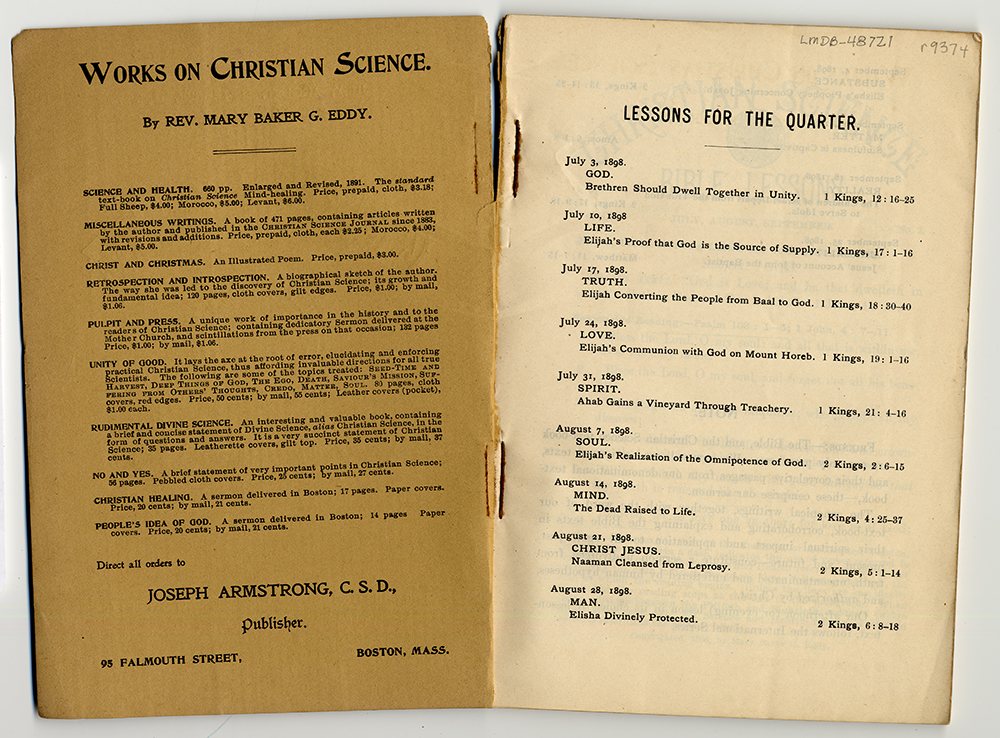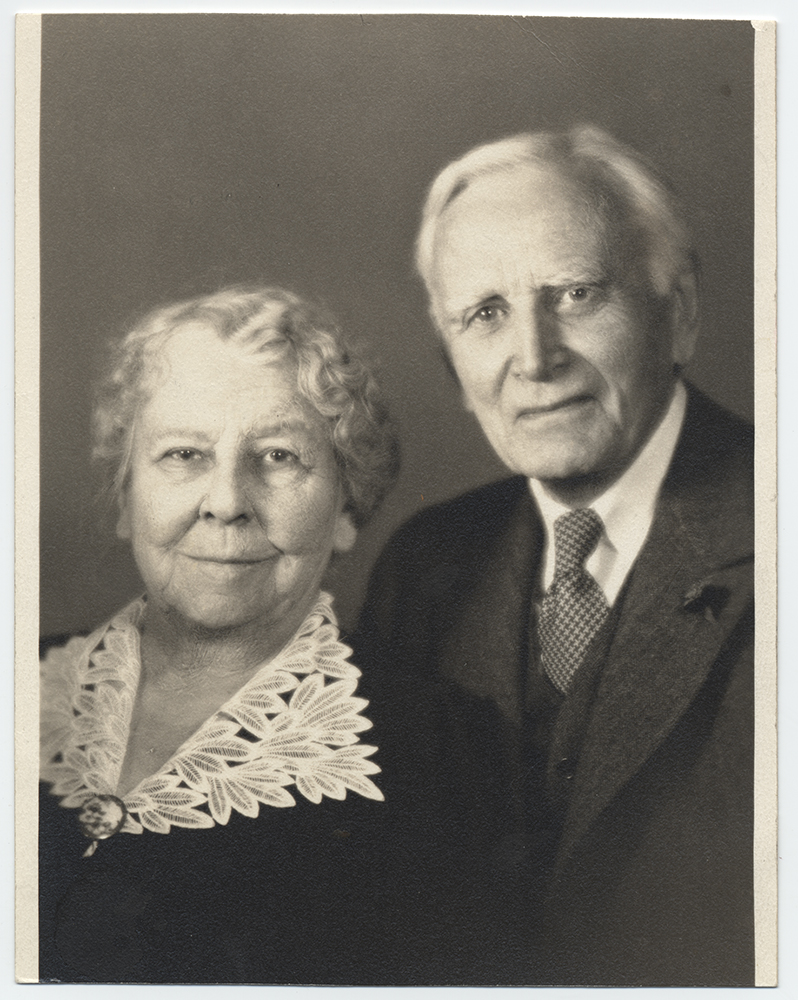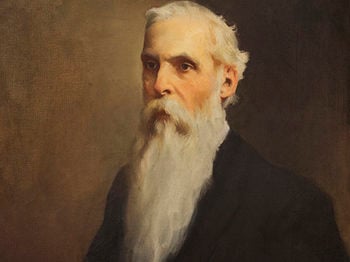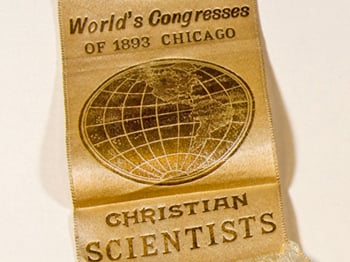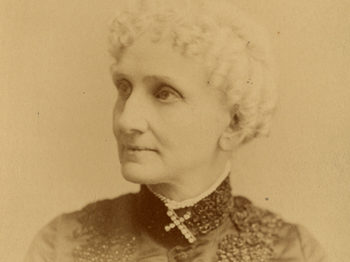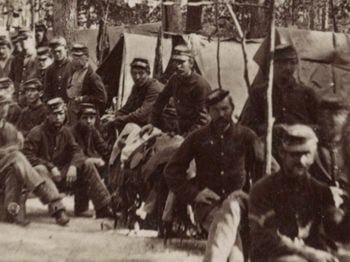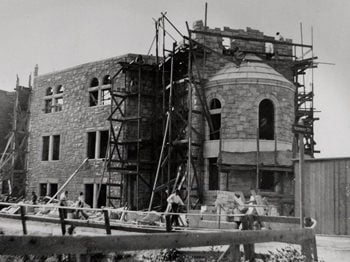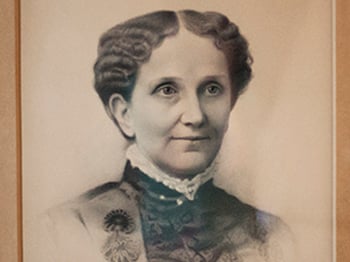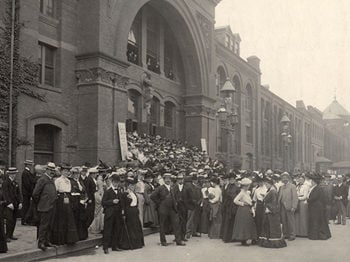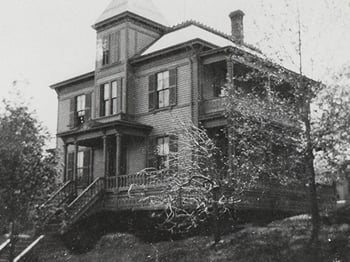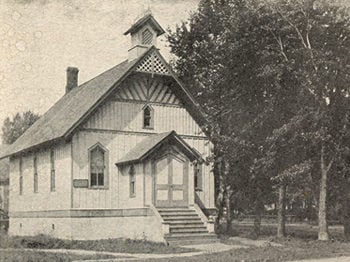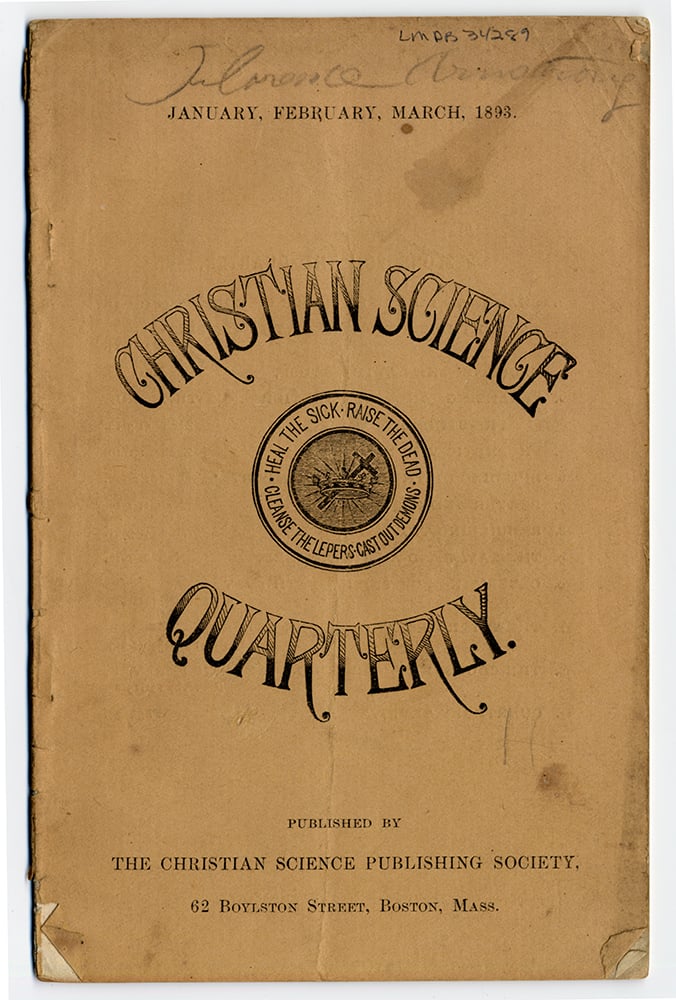
As Mary Baker Eddy’s student, and member of The Christian Science Bible Lesson Committee at various times from 1898-1927, Irving C. Tomlinson observed, “viewed historically, the [Christian Science] Bible Lessons are a plant of sturdy growth.”1
This article considers some of the aspects of the evolution of these Bible Lessons, including the interdenominational Uniform Series of the International Sunday-School Bible Lessons and the twenty-six Bible lesson topics later designated by Mrs. Eddy for her church. Of those twenty-six Bible Lesson subjects, Tomlinson notes that Mrs. Eddy received them “through inspiration.”2 William P. McKenzie, also a student of Mrs. Eddy and member of The Christian Science Bible Lesson Committee from 1896-1917, further informs us that “it was understood that these topics covered the course of instruction given by her [Mrs. Eddy] in [Christian Science] class teaching.”3
It then is perhaps no small matter to consider the historic context in which these weekly Bible Lessons emerged, since Mrs. Eddy, herself, has written of them as “…a lesson on which the prosperity of Christian Science largely depends.”4
The Origin of the International Bible Lesson Series
As one noted author has written on this subject: “The system of International Lessons did not spring up in a night…. The plan was the culmination of a long series of experiments with systems of biblical study.”5 Most acknowledge that this experimentation began in the 1780s with Robert Raikes in England. Raikes faced the task of teaching reading, writing and church catechism to criminals and the poor in England. His system, which gathered the poor and uneducated together each Sunday to be instructed by women teachers, provided both the stimulus and inspiration to more widespread education — secular and religious — for those in England and America.
From 1800 to 1825 the focus of religious education in America largely centered on the strict memorization of Bible verses. This methodology proved less than fully adequate, so that by 1825 a new system known as the “limited lesson” or the “selected lesson” was launched. These new Bible lesson plans were designed for use in Sunday-schools (which included both adults and children) and centered around “…a course of scriptural selections extending through five years, of forty lessons each year, and including ‘the principal facts and truths of the Bible.'”6 By 1827, various publishers, including the American Sunday-School Union (organized in 1824), produced a wide array of annual lesson books designed to encourage, over a number of years, the study of the whole Bible in chronological or subject-organized portions. Yet the very multiplicity of publishers, arrangements, approaches and selections meant that these lessons were still very far from the hoped for ideal of either national or international unity in Scriptural study. This period of development in the International Bible Lessons has been very aptly termed the “Babel Series.” After all, “each denomination and prominent Sunday-school publishing house put forth a scheme of lessons of its own, putting emphasis upon its creed, or planned to suit its constituency.”7
Such separatism was overcome, gradually, starting with what had been learned from the tragic experiences of the American Civil War of the 1860s — that division was perilous to society and religion. Added to this was a ground swell of requests at Sunday-school teachers’ institutes, held from 1862-1869, for a uniform topic of study. Edward Eggleston, of The National Sunday-School Teacher, expressed, in 1869, the growing need:
“One lesson for the school — the same in the Bible classes, the main school and the infant class, but adapted by teachers to the capacities and wants of each, is…the foundation for all true advancement. It gives concentration, oneness, heart, life, success…. Without a uniform lesson there can be no teachers’ meeting…unity of thought in hymns and prayer is out of the question; the moral power of a large number studying the same passage is destroyed. There can be no such thing as an effective school without a uniform lesson of some kind.”8
Dr. Henry Clay Trumbull, Secretary of the Executive Committee for the National Sunday-School Convention, noted the problems that beset this desired goal of a uniform Bible lesson plan and the means by which success in this endeavor was finally reached in these words:
“…Apparently no publishing society or house was originally desirous of the experiment [of a uniform Bible lesson series]. Most of the prominent Sunday-school men of the nation doubted both its feasibility and its desirableness. It was the common people of the United States — the great mass of Bible students through the length and breadth of the land — who pressed for it, creating a public sentiment in its behalf not easily resisted.”9
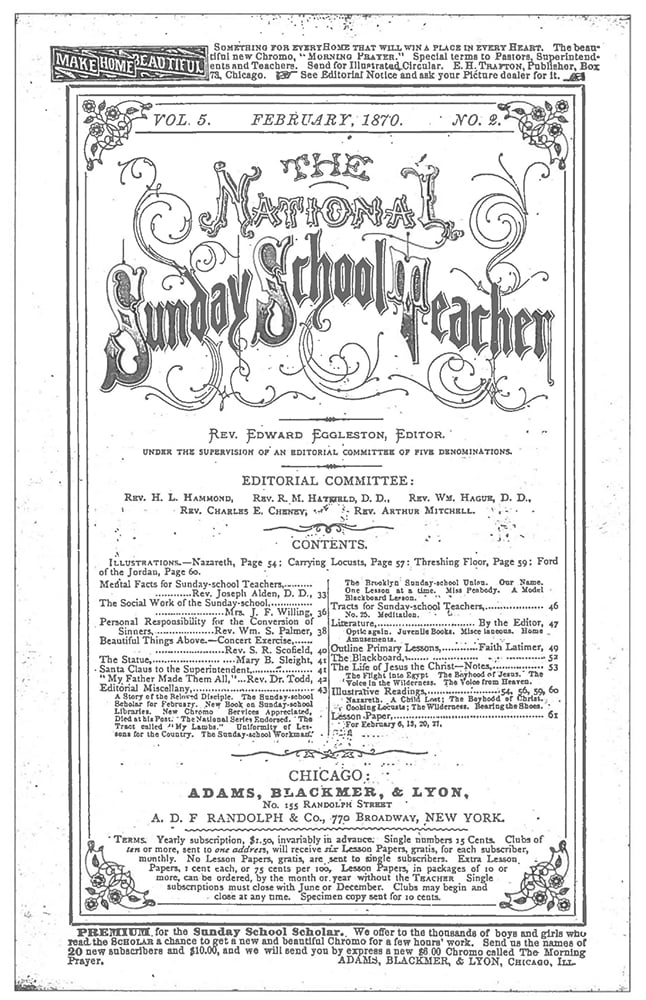
Due to such a popular outcry, the Executive Meeting of the National Sunday-School Convention held on July 10, 1871, endorsed the view that, “the Sunday-school cause in our country would be greatly promoted if the publishers of Sunday-school lessons would unite on a uniform series of topics for the [Bible] lessons of 1872.”10 A committee of five was appointed to prepare a trial set of topics for the Uniform Bible Lessons. The committee’s membership included: Edward Eggleston of The National Sunday-School Teacher; Richard Newton, Editor for the periodicals of the American Sunday-School Union; John H. Vincent of the Methodist Episcopal Sunday-School Union; Henry C. McCook of the Presbyterian Board of Publication; and B. F. Jacobs, a Baptist from Chicago.
The committee published their selections for the Uniform Sunday-School Bible Lessons in the October 1871 issue of The Sunday-School World. These committee-selected subjects and Bible citations left each religious group and their respective publishing houses free to package these lessons with its own explanations, questions, or other helps on each lesson. This freedom of presentation enabled the lessons to meet the specific needs of most Protestant churches. After all, the purpose of the committee on the Uniform Lessons was to insure uniformity in weekly subjects and the Bible verses selected for each lesson topic only and not to attempt to enforce uniformity among the churches in doctrine or methods of instruction.
Evidently, the first set of subjects proved sufficiently promising so that by the fifth National Sunday-School Convention, held in Indianapolis in 1872, the following resolution was passed that established the permanent foundation for the Uniform Series of the International Sunday-School Bible Lessons:
“Resolved: That the convention appoint a committee, to consist of five clergymen and five laymen, to select a course of Bible lessons for a series of years not exceeding seven, which shall, as far as they may decide possible, embrace a general study of the whole Bible, alternating between the Old and New Testaments semi-annually or quarterly, as they shall deem best; and to publish a list of such lessons as fully as possible, and at least for the two years next ensuing, as early as the first of August, 1872; and that this convention recommend their adoption by the Sunday-schools of the whole country; and that this committee have power to fill any vacancies that may occur in their number by reason of the inability of any member to serve.”11
The first committee on the Uniform Lessons consisted of representatives from the Baptist, Congregational, Episcopal, Methodist, and Presbyterian Churches. The committee selected a cycle of lessons for seven years in a general chronological order from both the Old and New Testaments.12 By this method, some 31,173 verses (about one-sixth of the Bible) were studied in the first seven years (1872-1879) of the International Series. Lesson texts for each week were composed of ten to twenty verses per lesson, and there were forty-eight lessons per year (the last Sunday in every three months being for review, or a lesson selected locally by each Sunday-school). By 1874, “Golden Texts” (later to be known as the “Key Verses”) were added to the format of the International Bible Lesson Series.
The new system of uniform Bible lessons found instant popularity in the United States as an important means of promoting Scriptural study. In 1875, these new uniform lessons had found acceptance in nineteen nations, so that by 1905, approximately twenty-six million adults and children were studying the Uniform Series of the International Sunday-School Bible Lessons (or as they were more simply known, the “International Series”).
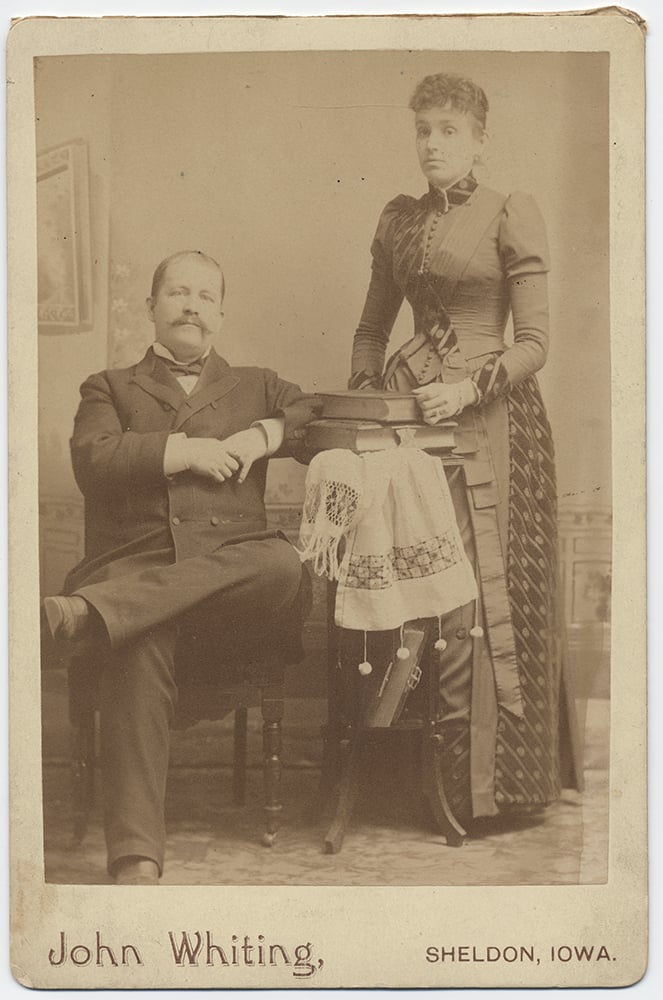
The success of these Bible lessons had a great deal to do with the specific and simple set of instructions adopted by the Indianapolis Sunday-School Convention in 1872 for the first and subsequent lesson committees. Those instructions are as follows:
- “Alternation each year between the Old and New Testaments.
- Beginning with Genesis, to select from the Old Testament in chronological order.
- To spend part of each year in studying the life and ministry of Christ, beginning with Matthew and passing in order through the other Gospels.
- To follow with lessons on the apostles, the planting of the Church, and the doctrines of the New Testament, as contained in Acts and the Epistles.”13
It has been said that, “so intelligently and thoroughly were the selections of the first Lesson Committee made that they have been the landmarks of succeeding committees….”14
Despite the excellence, popularity, or practical utility of the Uniform Series of the International Sunday-School Bible Lessons, they have been criticized as being too fragmentary and not allowing enough latitude for specific denominational study or emphasis. Yet on the whole, those who adopted them felt they had been educated to a more comprehensive knowledge of the Bible, provided a basis on which unity of study and instruction was possible, and given access to a whole new range of tools to aid them in Scriptural study encouraged by the International Series (a series that has stood the test of time, and is still published and used today by some 40 million Christians worldwide). It is perhaps these very positive and helpful aspects of the International Series that paved the way for it to be used from August 1888 to March 1899 by the Christian Science Church. After all, it must be remembered that the new members to the fledgling Christian Science Church were largely coming from American Protestant churches where they had seen how useful the International Series could be in promoting unity in Scriptural study and teaching.
The Use of the International Series by Christian Scientists
In the June 1888 issue of The Christian Science Journal there was an article stating that beginning in July 15 there would appear “Notes on the International Sunday-school Lessons, written from a Christian Science standpoint, by Frank E. Mason, C.S.B., assistant pastor of the Church of Christ (Scientist), Boston.” The notice, written and signed by Mason, goes on to say: “These notes are issued at the request of our beloved Teacher and Pastor, Rev. M.B.G. Eddy. The object is to avoid conflict of ideas, and establish unity of thought.” Furthermore, “the full interpretation of the lessons will not be attempted; but a general line of thought will be indicated, which can be enlarged by each reader for himself…. We must think for ourselves…. A few moments of solid thought will work wonders toward unfolding the spiritual interpretation of the Scriptures.”16
These notes continued to be included in the Journal on through the March 1889 issue. While there was an interruption of two months (in April and May), they appeared again in June 1889, but were not published in July. When published in August it was with a change in format, and with the new title of “Christian Science Bible Lessons (International Series).” These continued on through November 1889. It was during this period that the Christian Science Bible Lessons were first issued, by request, as leaflets for distribution (June 1889), in the same size as the Journal.17
Another unfolding step was announced in the August 1889 Journal: “The demand for the Christian Science Bible Lessons is such that it has been found necessary to issue them as a regular serial…. All who hold Sunday services are earnestly recommended to make a study of these Lessons a feature of their meetings, and to commence with the first of the Series.”18 The idea continued in another notice on the following page:
“The Christian Science Bible Lessons should be ordered by every group meeting for Sunday services. It will be better for all Classes to commence with No. 1…to follow the development of the thought. These lessons are based on the same Scripture Texts as the International Series, but there is nothing else in common. They are Christian Science Bible Lessons, pure and simple…. They will doubtless form one of the standard publications of the Publishing Society….”19
As further assurance of keeping interpretation of the Scriptures impersonal in Bible study among Christian Scientists, it was announced in the Journal that commencing in January 1890 the Christian Science Bible Lessons (International Series) would be prepared by a number of Christian Science workers, rather than a single individual, and would contain “copious references to passages of Science and Health illustrative of the Scripture text under consideration.”20 Mrs. Eddy actually appointed the committee herself that would undertake this work, the members being Julia S. Bartlett, William B. Johnson, Ira O. Knapp, and Rev. Lanson P. Norcross.21

